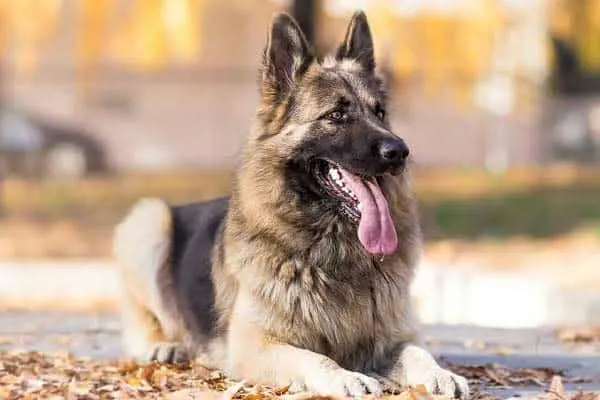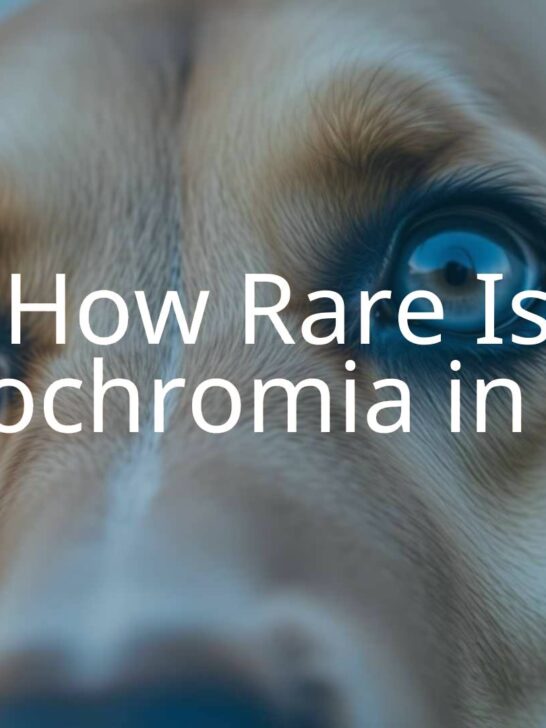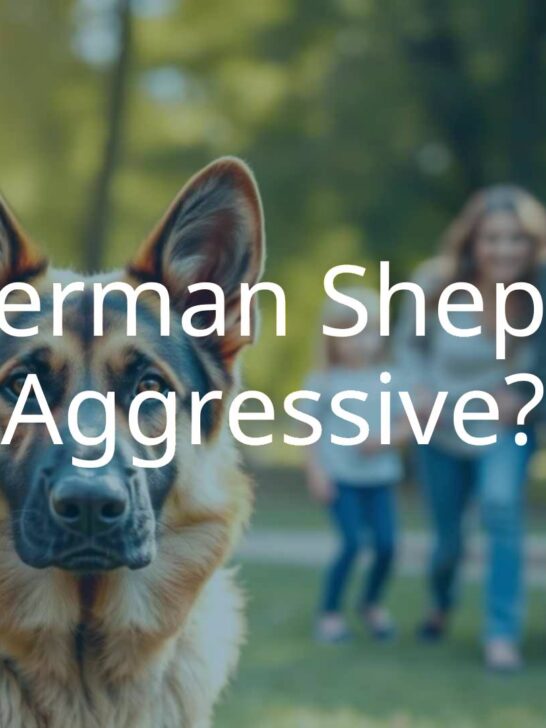American vs. European German Shepherds: What’s The Difference?
Preparing to own a German Shepherd is stressful enough as is, let alone trying to decide which specific type of GSD you want to own!
When trying to decide between the American German Shepherd vs. European German Shepherd prior to adoption one, it will be helpful to have some additional breed information.
You’ll be relieved to know that both lines of German Shepherds are of the same breed, but each has its own unique differences.
We will help you uncover what’s different and what’s similar between them so that you can choose the right one for your needs and lifestyle.

The European German Shepherd vs American German Shepherd
One difference between these two breeds is the price. Despite being smaller, European GSDs are actually more expensive than their American counterparts, costing upwards of $5,000.
European German Shepherds are also best suited as working dogs while American GSDs are better as family dogs, probably due to the fact that European GSDs were bred to be working dogs in the first place.
European German Shepherd
Size
A female European German Shepherd will grow up to 24 inches tall and weigh up to 70 pounds. A male European German Shepherd can grow up to 26 inches tall and weigh up to 90 pounds.
It’s usually larger than a regular German Shepherd but smaller than an average American German Shepherd.
Appearance
A European German Shepherd has a wolf-like head, a long neck, and thick collar fur. Its back and loins are wide, strong, and long.
When excited, its long tail with thick fur is erect. When it walks, it trots and doesn’t skid.
Teeth
These dogs have powerful jaw muscles, and full teeth that can produce a scissor-cutting edge bite.
Temperament
The European GSD is calm, quiet, active, attentive, and confident. It focuses on its owner’s commands, putting it in an active defense position at all times.
They need regular exercise to channel their energy. These GSDs are also suited as working dogs and are highly regarded as police or guard dogs.
Health
Just like its predecessor, a European German Shepherd is at risk of developing dysplasia (hip and elbow) and ear infections.
Lifespan
A European German Shepherd can live for up to 14 years.
European German Shepherds are actually a mix of the classic German Shepherds and native Russian dogs. The goal was to produce large and cold-resistant dogs to help the Russian police and military.
European GSDs are regulated and documented by the German Shepherd Club of Germany, who has worked hard in preserving this breed.
They ensure that the breeding processes produce great European German Shepherds in terms of working abilities, temperament, and physical attributes.
The European German Shepherds are also called East-European Shepherds, and are described as “extremely loyal and a devoted pet to its owner“.
American German Shepherd
The American German Shepherd is regulated by the American Kennel Club or AKC.
This breed was bred for show hence they’re called show line dogs. It possesses the intelligence and power of a real German Shepherd.
The American German Shepherd is at risk of suffering from nervousness and anxiety, a condition uncommon to GSDs. This breed isn’t recommended for first-time pet owners.
Size
A female American German Shepherd can grow up to 28 inches tall and weigh up to 110 pounds. A male can grow up to 30 inches tall and weigh up to 130 pounds.
American German Shepherds grow in full so they’re often seen as bigger than the European German Shepherd.
Appearance
This breed has a short to medium coat, which is ideal for a family dog. It also has a finer and bigger head, a steep slope on its back and angled rear legs.
Temperament
Although the temperament of the American German Shepherd is harder to predict, they remain highly intelligent dogs.
Health
Just like its ancestors, American German Shepherds are also at risk of developing dysplasia.
Lifespan
An American German Shepherd can live for up to 14 years.
Differences Between American German Shepherds & European German Shepherds
The most obvious difference between the American German Shepherd and the European German Shepherd is their appearance. American GSDs are bigger with longer bodies, and have downward sloping backs towards the hind legs.
On the other hand, European GSDs have much straighter toplines, and are generally healthier, while the American GSD has larger bones and weighs more than the European too.
Size
Although European German Shepherds are smaller than the American GSDs, they do have more muscle mass.
Back Appearance
A European German Shepherd has a straight topline, while an American German Shepherd has a sloped back.
Hock
A European German Shepherd has a longer hock when compared to an American German Shepherd.
Color
A European German Shepherd has a darker color when compared to an American German Shepherd, and is often red and black in color.
For American German Shepherds, their normal coat is black or tan.
Endurance, Power, & Temperament
A European GSD will have more endurance and stability since they’re working dogs. Thanks to this background, they’re also easier to train.
Registration
Before registering a European German Shepherd, it needs to pass several tests (endurance and herding performance) set by the German Shepherd Club of Germany.
An American German Shepherd can be registered easily at the American Kennel Club if both of its parents are registered American German Shepherds.
Use
A European German Shepherd is bred and trained to become a working dog (police dog or patrol dog).
Conversely, an American German Shepherd is bred to become a family dog or a therapy dog.
Adaptability to cold weather
A European German Shepherd can adapt to and tolerate cold weather. This is thanks to its experience surviving the Russian cold as a patrol dog.
An American German Shepherd can tolerate warm and cold weather, but cannot survive extreme weather conditions.
Health
With its slanted body, American German Shepherds are more prone to having hip dysplasia, and are also at a higher risk of developing allergies and bloating.
European GSDs are less prone to dysplasia due to their straighter and more balanced posture.
The strict breeding and training policy in place for European GSDs also ensures their health, and protects them from genetic diseases.
The Popularity of European German Shepherds
The European German Shepherd is less popular because of its nature and price.
Most dog owners are looking for a family pet that they can bring home to their kids, and the European German Shepherd isn’t normally bred to be this type of family dog.
There are also very few European GSD breeders, meaning the supply of European German Shepherds is comparatively low. This in turn causes increased prices which range from $1200 to $5000.
The strict standardized breeding regulations set by the German Shepherd Club of Germany also make it more difficult to breed these shepherds.
The Popularity of American German Shepherds
An American German Shepherd pup costs around $500 in the US, and is known to be great family dog and guard dog as well.
The American German Shepherd is one of the most popular dog breeds in the US thanks to its beautiful appearance, ability to adapt well to family life, and its price.
However, these dogs are also abandoned at a high rate, mainly due to maintenance costs, a lack of adequate space, and family changes (such as having a baby).
Is The German Shepherd Breed Right for You?
Differences aside, these two dogs are still from the same original breed – the classic German Shepherd.
Before choosing a type of German Shepherd, ask yourself if this is the right breed for your lifestyle?
If you want a German Shepherd, you should have the following:
- Active outdoor lifestyle to match your dog’s exercise needs.
- Large space at home to let it play and run around.
- Basic knowledge on how to raise a German Shepherd as this isn’t an ordinary dog – it’s not a toy dog that you can leave on your sofa for hours on end.
- Money for proper vaccinations, food, and medical needs. Remember that GSDs are at high risks of developing hereditary medical conditions.
What Are Your Other Breed Options?
German Shepherds’ loyalty and intelligence set them apart from other breeds.
However, if you think you might not have what it takes to care for one, similar breeds are available.
One such example is the Border Collie, which is another energetic and intelligent dog. It’s a bit smaller than a GSD, but maybe a little cuter.
You can also consider German Shepherd mixed breeds such as the German Shepherd Husky or the German Shorthaired Pointer.
American vs. European German Shepherds: Making The Right Choice
There are many similarities between raising a German Shepherd and raising a child.
You have to train and teach your GSD from a young age to help it develop proper skills, and to tame its aggressive nature. This actually applies to pretty well any dog breed.
In the end, getting a dog that fits your lifestyle and that you can easily care for is what’s most important.
With the proper knowledge and preparation, both American and European German Shepherds can be the right addition to any home.
























